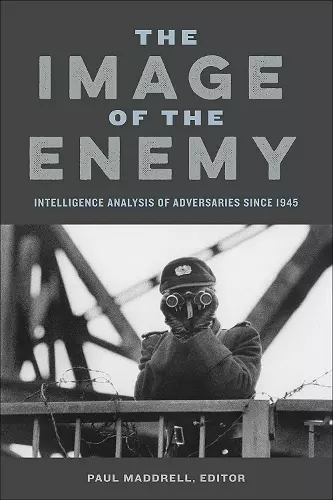The Image of the Enemy
Intelligence Analysis of Adversaries since 1945
Format:Hardback
Publisher:Georgetown University Press
Published:1st Nov '15
Currently unavailable, and unfortunately no date known when it will be back

How should we know about our enemy? How do we know we are right in our estimations? These are two of the most persistent questions confronting intelligence agencies. The Image of the Enemy is a remarkable book that addresses these issues directly and thoughtfully. It is full of revelations and remarkable observations that will surprise even those who thought they knew about intelligence analysis. -- Richard Aldrich, Professor, Politics and International Studies, University of Warwick
Drawing on sources only available since the Cold War ended, The Image of the Enemy breaks new ground as it examines how seven countries gathered, analyzed, and used intelligence to deepen their understanding of their adversaries.Intelligence agencies spend huge sums of money to collect and analyze vast quantities of national security data for their political leaders. How well is this intelligence analyzed, how often is it acted on by policymakers, and does it have a positive or negative effect on decision making? Drawing on declassified documents, interviews with intelligence veterans and policymakers, and other sources, The Image of the Enemy breaks new ground as it examines how seven countries analyzed and used intelligence to shape their understanding of their main adversary. The cases in the book include the Soviet Union's analysis of the United States (and vice versa), East Germany's analysis of West Germany (and vice versa), British intelligence in the early years of the Troubles in Northern Ireland, Israeli intelligence about the Palestinians, Pakistani intelligence on India, and US intelligence about Islamist terrorists. These rivalries provide rich case studies for scholars and offer today's analysts and policymakers the opportunity to closely evaluate past successes and failures in intelligence analysis and the best ways to give information support to policymakers. Using these lessons from the past, they can move forward to improve analysis of current adversaries and future threats.
The interplay among the case studies is fascinating and instructive for academics and intelligence professionals alike. Studies in Intelligence A valuable addition to the historiography of modern intelligence. It is both a work of clear historical analysis as well as a catalogue of strengths and weaknesses, the understanding of which would be of great benefit to members of the intelligence community across the world today. By focusing on intelligence assessments of one's primary adversary, it highlights a factor which is often forgotten in the study of intelligence-the human role in evaluating raw intelligence material, understanding how it fits into the bigger picture, and then acting on it accordingly. Institute of Historical Research
ISBN: 9781626162389
Dimensions: unknown
Weight: 454g
312 pages